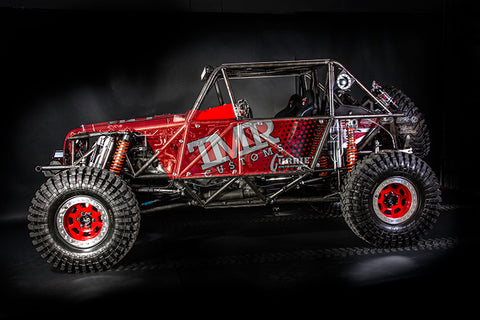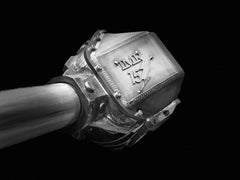How to Install Aftermarket Differential Covers (& Why You Need One)

Heading out on an off-road adventure? Blazing through the trails and climbing over rocks in a lifted 4x4 is a blast – but having to cut your trip short or pay hefty repair costs for a broken differential can put a damper on the fun.
Having the right equipment and parts for a safe, fun experience is critical if you’re off-roading – and that’s where aftermarket differential covers come in. With an aftermarket differential cover from TMR Customs, you can protect your drivetrain and spend less time worrying about your differential during tough off-roading sessions.
So, in this guide from TMR Customs, we’ll discuss the basics and importance of differential covers, then go over the basics of the installation process. Let’s get into it.
What Are Differential Covers?
Your Jeep or truck already has a differential cover. This metal cover protects your ring and pinion gears, ensuring smooth performance. But the thin stamped sheetmetal stock covers can be broken or crushed during a heavy off-roading session and may contribute to overheating and premature gear wear. Even worse, you may bash a rock through the stock cover and damage the ring gear or puncture the cover causing you to loose your gear oil.
This is not the case with aftermarket differential covers from TMR Customs. These covers are larger than stock diff covers to hold more oil and promote cooling, and are built from strong, fully-welded 1/4 inch and 3/8 inch steel plate, providing you with the protection you need when you’re driving off the beaten path.
What Types of Differential Covers Are Available?
There are a wide variety of different differential cover styles available at TMR Customs. Here are a few of the most common models and types of differential covers used in off-roading:
- 14-bolt
- Ford Super Duty Dana 60
- Dana 60
- Dana 44
- Dana 30
- Ford Sterling
- Ford 10.5
- Ford 10.25
- Jeep JL & Jeep Gladiator
Click here to browse our available diff covers now and find the product that’s right for your vehicle at TMR Customs.
How to Install Differential Covers – Your Quick Guide
If you’re handy, you can remove and install differential covers on your own with common hand tools. Here’s a step-by-step guide to the process:
-
Drain differential & remove old bolts – First, grab an oil drain pan and put it underneath your differential. Then, begin loosening the bolts on the lowest part of the differential until the gear oil begins to drain. Sometimes it takes the smack of a mallet to break free the seal and get the oil flowing. Once the gear oil has fully drained, remove the rest of the bolts to remove the old diff cover.
-
Clean the diff housing – Using brake cleaner, spray the inside of the housing to clean up the gears inside your differential. This is a good time to look for any signs of wear & damage to your differential.
-
Scrape away old gasket material – With a plastic scraper, remove any old rubber gasket material from the outside of the differential housing for a proper seal.
-
Install new gasket & cover – Use a pre-made gasket or RTV (silicone gasket maker) to make a gasket. Then, line the new cover up on the gasket and push it into place. Hand tighten a bolt to hold the cover in place, then re-insert the remaining bolts and torque them to the manufacturer’s specs with a torque wrench. Pro tip – at TMR Customs we’re big fans of Lube Locker brand reusable gaskets. If RTV is more your style then “The Right Stuff” gasket maker from Permatex should be your go to.
- Fill differential with gear oil – Remove the fill plug and fill up your differential with gear oil, using the oil recommended by your manufacturer. Then, re-insert and tighten the fill plug.

Ready to get started? Shop our collection of aftermarket differential covers today and get the right cover for your Jeep, 4x4 Truck or rock crawling buggy!



 USD $
USD $
 ZAR
ZAR
 SGD
SGD
 SEK
SEK
 RON
RON
 PEN
PEN
 MXN
MXN
 KRW
KRW
 ISK
ISK
 IDR
IDR
 HKD
HKD
 CAD
CAD
 BRL
BRL
 BGN
BGN
 AED
AED
 NZD
NZD
 NOK
NOK
 ILS
ILS
 GBP
GBP
 EUR
EUR
 AUD
AUD